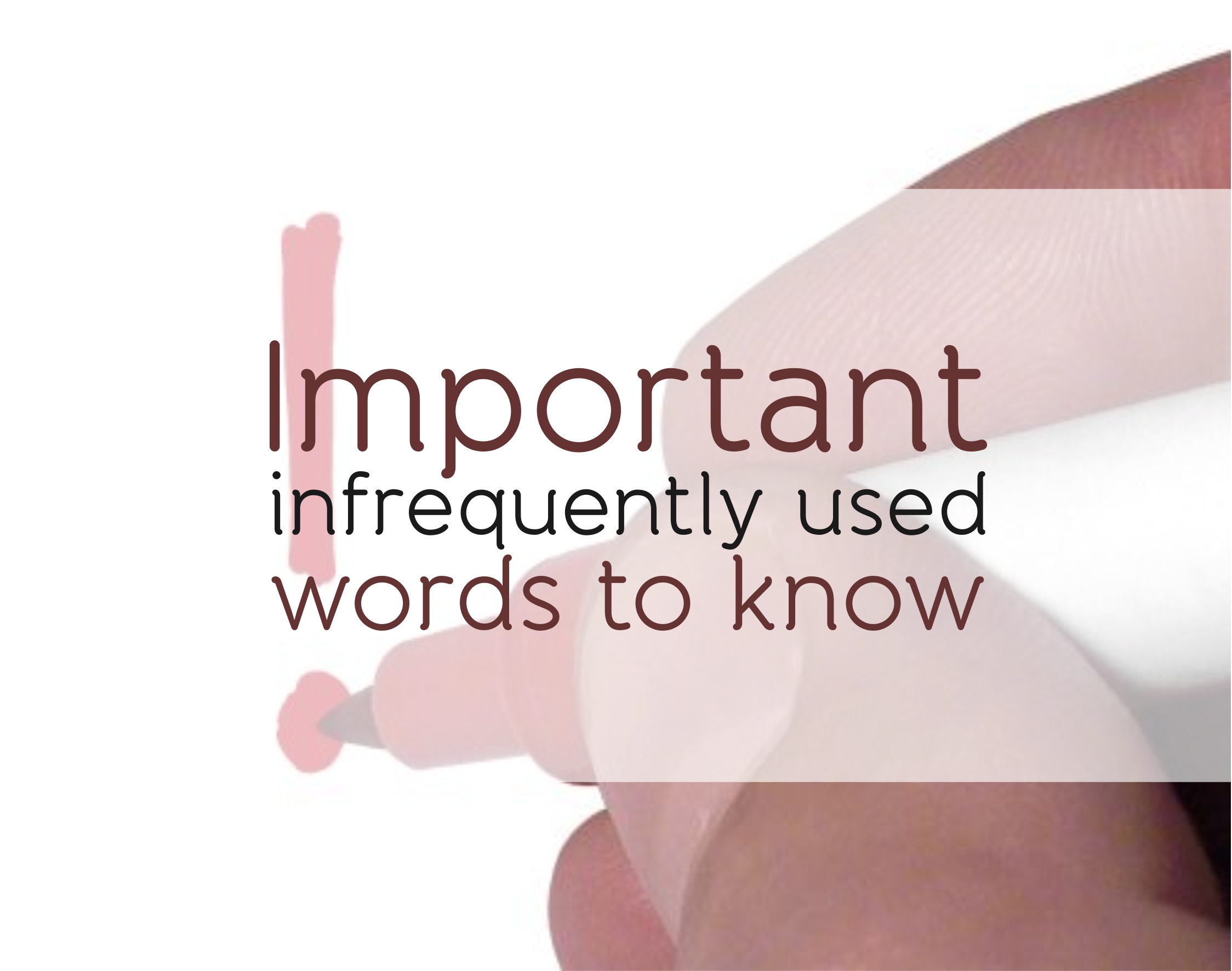Business Writing Truths and Myths

Written by Lynn Gaertner-Johnston, Syntax Training
For the 25 years I have taught classes in business writing, I have heard and rejected a few myths. And I have learned and applied some important truths. Don’t let yourself be fooled by false rules that others may follow. Recognize and apply what makes sense.
Is each of the five statements below a truth, a myth, or a mix of both depending on the situation? You decide. Read More…
Effective communication is “BRIEF”

We send and receive dozens of e-mails and have tens of conversations daily. More often than not one needs to read an e-mail thoroughly several times before understanding the actions needed or despite carefully listening the ramble of someone misses the point of the conversation.
“43% of people who received long-winded emails deleted or ignored them.”
Be more effective in your communication by following the BRIEF rule.
Fast Company have created the following formula for better communicating your information and/or needs:
B (Background): Provide a quick context—what happened beforehand?
R (Reason): Explain why you’re contacting them now— why should they engage?
I (Information): Give two to three pieces of information. What are the three main points or bullets of the topic?
E (End): Decide what do you want to be remembered. Tell the next steps – you will do what OR you expect the other site to do what.
F (Follow-up): Try to predict the questions asked at the end of conversation or (as a reply to the message) and prepare answers in advance.
Read why less is more HERE.
When to Write a Memo, Not an Email

These days we have replaced memos with rampant emails. We have pushed email too far, expecting it to communicate long, complex, important messages to everyone. Our inboxes are stuffed, and those essential messages are not being read.
It’s time to take the pressure off emails. If you want people to read your important ideas and information, you need to revive the memo. Consider these suggestions:
1. Recognize the best uses of email. Emails win for fast, temporary communications that readers quickly read, act on, and delete. Emails excel at succinct requests and replies, speedy updates, short reminders or check-ins, time-sensitive announcements, and similar short-lived messages. They are perfect for briefly introducing attachments such as memos.
2. Use a memo when you are writing a message built to last. If your communication is a detailed proposal, a significant report, a serious recommendation, a technical explanation, meeting minutes, a new policy, or something else that readers will consult more than once, make it a memo. Your readers will be able to save the document, read it, and find it when they need the information again.
3. Use a memo when formatting matters. If the piece contains bullet points, bold headings, columns, tables, a graph, or even a good balance of white space, a memo will help you retain that formatting. To guarantee your formatting, save the memo as a PDF. If your audience reads emails on their phones, an attachment may be the only way to preserve the formatting you intend.
5. To communicate formally, choose a memo. Memos provide a place at the top of the message to insert the company name and logo and the professional titles of senders and receivers. Those inclusions make the message appear more formal. Also, a well-formatted message conveys significance.
6. When you worry that your message is too long as an email, write a memo. Impossibly long emails often result when you try to incorporate important, lasting information in them. But memos work best when people will return to your message for information. (See Point 2.) For instance, if you are communicating the details of the four-stage construction project, use a memo. To convey pros and cons of a major purchasing decision, lay out your research in a memo.
Attach your memo to an email that gives your readers a brief summary of the memo contents. For some readers, that summary will be enough. Those who need the information will read and save the memo.
7. To communicate complex information to people outside your organization (clients, citizens, etc.), consider a memo or a letter. A letter is the traditional format for external correspondence, especially to people you serve, such as customers and patients. But you can choose a memo to write to vendors, consultants, members, clients, professional peers, and others who collaborate with you to get results.
8. To send your memo, simply attach it to a brief email. Or send a printed copy through interoffice mail if that approach makes sense.
I have attached a sample memo to illustrate a standard format.
The memo is no dinosaur. Use it for your significant communications, and your messages will come across as professional, relevant, and of lasting importance.
Lost in Long Sentences?

When reading essays, books, and novels, many people enjoy traveling through long, complex sentences with twists and turns that lead to a satisfying end. But in business writing, readers want a short, clear path to understanding. Follow the four tips below to edit long sentences.
1. Include just one idea per sentence. When sentences have several ideas, readers need to figure out the relationship between the ideas. They need to suspend their understanding until they get to the period (full stop). In contrast, readers can quickly grasp each one-idea sentence and move on to the next.
The sentence below packs in three ideas. The punctuation makes is easy to recognize them.
Test Yourself Number 1: Revise this three-idea sentence, whose length makes readers move slowly:
Our credit department has requested that you provide a copy of your exempt sales tax document and that you fill out the top and signature portion of the credit application just for assurance that we have the pertinent contact information correct.Revise the sentence to communicate just one idea per sentence. After you have tried, you can check my revision. It appears at the end of this article.
In baseball, the windup is the pitcher’s actions before releasing the ball. Although important to the pitcher, the windup can distract the batter. The same is true of readers: If you begin a sentence with a fancy windup, you may lose your readers before releasing your main idea. Instead, start with your subject.This sentence has a dizzying windup, which makes it too long and complicated:
Test Yourself Number 2: Start with the subject rather than the long windup in this sentence, so readers do not struggle to understand its meaning:By keeping the three critical success factors in mind and talking with your unit manager or your peer coach whenever you find yourself struggling with an employee issue, you should have the greatest opportunity for success as a new supervisor.
My revision appears at the end of the article.
Your revision might look like mine: The navigation panel on the left side of the screen is the same for all contractors. It helps them navigate through the site to find what they need quickly.
Test Yourself Number 3: Break up this long sentence by inserting a period and replacing and. Then compare your revision with mine, which appears at the end of the article.
Recently there have been several calls and emails from individuals who are using an MS Excel version dated earlier than 2007 and are not able to save their changes based on the instructions provided in the guidelines.
4. Do not let a long list transform your sentence into a solid wall of text. Often you need to include a list in your writing. But a sentence burdened with a long list can become a blur to your reader. If that happens, your reader will not see any of the important information in your list. The solution is to break up the long, heavy sentence into bullet points or short sentences that keep your reader’s attention.
How would you revise this list-heavy sentence?
- Counseling managers on issues ranging from major incidents to employee communications and community relations.
- Representing the company with various groups.
- Supporting the needs of individual plants.
- Managing strategic media opportunities and crisis communications.
- Placing community advertising.
- Publicizing company efforts in environmental stewardship.
Test Yourself Number 4: Restructure this long sentence so that each part stands out:If new information concerning the case should come to your attention, if you should leave the area for more than a few days, or if you should change your address or telephone number, please advise Marie Smith or your insurance agent immediately.
Solution to Number 1:Our credit department has requested that you provide a copy of your exempt sales tax document. Also, please fill out the top and signature portion of the credit application. This step is just for assurance that we have the pertinent contact information correct.Solution to Number 2:You should have the greatest opportunity for success as a new supervisor if you do these two things: Keep the three critical success factors in mind. Talk with your unit manager or your peer coach whenever you find yourself struggling with an employee issue.Solution to Number 3:Recently there have been several calls and emails from individuals who are using an MS Excel version dated earlier than 2007. They are not able to save their changes based on the instructions provided in the guidelines.Solution to Number 4:Please immediately advise Marie Smith or your insurance agent if any of these occurs:
-
New information concerning the case comes to your attention.
-
You leave the area for more than a few days.
-
You change your address or telephone number.
8 Overused Cliches Employers Are Sick Of Seeing in Resumes
Written
Looking for a new job isn’t easy, and it can be hard to want to put your best into every iteration of your resume and cover letter. But here’s the thing: even though the economy’s been improving, times are still tough. Plenty of people are looking, and that means for every job opening you see, there’s some HR person out there who is being swamped with a deluge of resumes.
If you want to be sure your resume will actually make them hit the pause button (figuratively) and not the delete button (literally), you’ve got to avoid these cliche words and phrases that sound impressive but don’t actually convey much meaning.
“I’m a creative thinker”
Unless it’s literally part of your job title (e.g., Creative Director), “creative” is an adjective that’s become so overused it’s utterly meaningless to many recruiters. Think of what the inverse of this statement would be: “I only think inside the box.” “I can’t come up with anything new.” “I have no ideas of my own to contribute.” Literally no one is going to say that, so it means that stating the obvious is well, pretty obvious.
Instead of saying you’re creative, demonstrate that you’re creative with a well-written cover letter. Give a specific example of a problem you’ve overcome, a solution you devised, or how you’ve managed to expand your current role.

“I’m results-oriented.”
Again, who exactly doesn’t want to get results for their employer? (A person they don’t want to hire, that’s who!) They will assume you’re results oriented, so show them the actual results.
Numbers can help here: Quantify how many sales you made in the last quarter, the number of people you’ve supervised as part of your team, or the amount of traffic your ad campaign drove to your client.
 “I’m a guru/ninja/expert/etc.”
“I’m a guru/ninja/expert/etc.”
No, no, no. Unless “Guru” or “Ninja” is your actual job title, skip the enthusiastic euphemisms. Yeah, if one of your references describes you that way, it’s great — but if you’re talking about yourself like this, it’s a bit empty.
If you really are extra-super-good at what you do, show it by listing your accomplishments: Grants you won, conferences you’ve spoken at, programming languages or software you’ve mastered, and so on. If you’re kicking butt, your accomplishments will convey that for you.

“I have excellent oral and written communication skills.”
Another case of something you should show, not tell. Though you’ll frequently see this on job descriptions, if it shows up in your cover letter or resume it feels like filler — because it is. If you really do have excellent communication skills, you’ll have a cover letter that’s clearly written, appropriately tailored to the position, and inviting to the reader. Same goes for your resume.
Drop this line, and spend the extra time proofreading to make sure that you don’t have any spelling errors or grammar gaffes. (If you’ve read your own resume so many times that you won’t even notice a mistake, ask a friend to proof it for you.)

“My references are available upon request.”
Well, yeah, they should be! Even if a potential employer hasn’t asked for your references yet (and many don’t until you’re doing a formal application), it’s more than acceptable to let them assume that of course you have references.
If they have asked for you references, name them and give their contact info in the appropriate part of the form, in a separate document, or below your cover letter, if you’re sending that in the body of an email. (In those instances, say something like, “Attached please find my references” or “Please find my references listed below.”) If they didn’t ask? Just don’t mention it for now. Use the extra space to say something useful about yourself!

“I’m detail-oriented.”
No one’s going to say “I’m a total space cadet” or “I don’t sweat the small stuff.” But saying you’re detail-oriented has become such a cliche as to be totally meaningless (not least because so many recruiters see resumes that are riddled with spelling errors and cover letters personalized for the wrong company by applicants who claim to be “detail-oriented”). Again, show this by making sure that your cover letter and resume are free of basic grammar and spelling slip-ups.
You can also demonstrate your attention to detail by being specific in your discussion of what you do: Managed a staff of three interns; Served as liaison between lab group and department head; Spearheaded development of pay-per-click marketing campaigns for X, Y, and Z clients.

“Duties:”
Don’t just list! Your resume needs to tell a story about you, not just rehash the job posting for your previous gig. Instead of making a simple list that begins with “duties” or “responsibilities include” (come on, you know that sounds like a total snoozefest), use active verbs to help convey the specific tasks you’ve accomplished on the job. Collaborated with internal team and external vendors to source products, implemented a new system for tracking leads, revamped corporate website to reflect new brand strategy.
Even if what you do isn’t terribly thrilling, using specific, active verbs can your resume stand out. (E.g., “Client communication” versus “Communicated with clients to ensure that targets were met and issues were promptly resolved.”)

“I’m passionate about what I do.”
Are you? Though today many employers want an intense level of commitment (which is a whole other deal), there are limits to how “passionate” one can be about, say, a call center job. Likewise, if you’re just starting out and you’re applying for jobs that are in a wide range of fields, you probably don’t have a “passion” for each and every one of them. If you actually are into what you do, it should be conveyed not only by your cover letter and resume, but also by your web presence (and yes, you should assume that before you get an interview request, you’re going to be Googled).
Your LinkedIn profile should obviously show that you’re excited about what you do, but ideally any other public profile (e.g., Twitter, which relatively few people have set to private) should reflect your interest and enthusiasm, at least a little. If it doesn’t, just leave “passionate” out of it. Otherwise, you’re just setting yourself up for an interview fail: “So, what makes you passionate about being an administrative assistant?” “Uhhhhhhhhh.” Don’t lay out anything in your cover letter or resume that you aren’t ready to answer for when you finally get that call.
Source
Image source: pixabay.com
Seven Tips for Communicating Data

Written by Lynn Gaertner-Johnston, Syntax Training
After you have worked hard to collect meaningful data, the big challenges are how and how much to communicate. Consider these tips when you work on your next report or presentation that includes data.
- Focus first on your message, not on the numbers.
When planning your communication, focus first on the big idea or points you want to make. Then incorporate the data that will help your audience understand and appreciate your points. Be sure your big idea gets center stage, not the numbers. - Explain the data.
Numbers mean nothing on their own. They need interpretation. Avoid asking readers or your audience to “review the attached spreadsheets.” Why should they review them? Which numbers should they pay attention to and why? What do the numbers indicate? - Put data in context.
Make it clear whether numbers are positive, negative, or neutral. If you tell a sales rep that she visited an average of six prospects per day, compare that number to the goal number of prospects. If a client walks 5500 steps in a day, state whether 5500 is the magic healthy number or only halfway there. If expenses are 18 percent over income, say why the reader should care. Explain that the account balance will be €0 by 2018 if nothing changes. - Paint a picture with your numbers so people can see them.
Even simple expressions like “a tenfold increase” or “a 30 percent drop” can seem vague unless your audience can see them. If numbers have decreased dramatically over a decade, do not use words and numbers alone. In a bold-colored graph, show the deep drop year by year, month by month over 10 years.
If your numbers are so large as to be abstract, paint them in recognizable mental pictures such as an area as large as Italy or a distance of 100 Greyhound buses. (Think of your audience when you choose the image.) How hot is 158 degrees Fahrenheit? Hot enough to fry an egg on the sidewalk.
Or show the numbers reduced to their essence. Jack Hagley’s graphic “The World as 100 People” (www.jackhagley.com/The-World-as-100-People) presents the world as though it were only 100 people. For instance, 83 of the world’s 100 people are able to read and write; 17 are not.
- Highlight important numbers.
A wall of numbers is as intimidating as a wall of text. Pull out essential numbers and focus on them. If you are presenting financial data, show just a small portion of it at a time on a slide or a page–just the portion you are discussing now. If you refer to and show just a small part, your audience will not say, “Where are you?” and “What are you talking about?” And always render numbers in a large enough font that you do not have to apologize for it.
Make it easy for your readers to find important numbers. If a client has asked for your fee, for example, don’t bury the number in a paragraph. Instead, render the number alone on a line or as part of a short heading, like this:
Your investment: US$19,000
- Prominently display the legends for tables and charts of numbers.
Ensure that your audience will know instantly that 3000 indicates 3,000,000 and that your balance is positive rather than negative. Use abbreviations such as K and M only if you are certain your readers understand them. (To some people, M means thousand; to others, it means million.) - Use only the essential, compelling numbers in the body of your document.
If numbers weigh down your document, your readers may forget your main point. So move most of the supporting tables, lists, charts, and graphs to the appendices. In a presentation, hold back some slides of data, and show them only upon request. Remember: The numbers are not the message; they serve the message.
If you think of your communication as music, your most important message comes through the soloist. The numbers are the accompanists. They play an essential role, but they should never drown out the soloist. If they do, your communication will not reach and change your audience.
How to Ask a Stranger for a Favor
Written by Lynn Gaertner-Johnston, Syntax Training

Send me the tips for taking effective minutes at meetings. Thanks.
50 Best Blogs for the Public Relations Major

News
Follow news in the world of PR with these blogs.
- PR Week: Check out PR Week for PR and communications news, as well as opinion, research, jobs, and events. (Recommended Post: Investment in Social Media Set to Increase Over Next Year)
- Everything PR: Stay on top of public relations news with Everything PR, a public relations news portal blog. (Recommended Post: 100 Media Monitoring Tools for PR)
- PR News: PR News will help you become a smart communicator with media relations, PR jobs, industry events, news, and much more. (Recommended Post: Do Something Different: Engage the Media Using Twitter)
- PRBlogNews: Find subjective public relations news and commentary on PRBlogNews.com. (Recommended Post: Useless Knowledge)
- O’Dwyers: On this New York-based blog, you’ll find insider news in public relations and marketing communications. (Recommended Post: Cooking PR Chile)
- PRSA Newsroom: Follow this blog from the Public Relations Society of America for awards, advocacy news, events, and more. (Recommended Post: PRSA Speaks Out on “Pay for Play”)
Public Relations
Follow these blogs to get a general look at public relations.
- Online Public Relations Thoughts: Read this blog to find daily thoughts on PR and trends in communication online. James Horton, the blog’s author, received three degrees, from UCLA, University of Missouri, and a university in Evanston, Illinois. (Recommended Post: Anger and Ignorance)
- PR in Your Pajamas: Find practical publicity ideas for entrepreneurs on PR in Your Pajamas. (Recommended Post: 15 Types of Stories That Get You Free Publicity)
- Tech PR Nibbles: Tech PR Nibbles features small insights and ideas for conversations, influences, and even bigger ideas. (Recommended Post: The Digital Miscommunicator)
- Skogrand PR Solutions Blog: Find solutions, tips, and insights on public relations, social media, and more on the Skogrand PR Solutions blog. (Recommended Post: An easy way to keep clients: surveys)
- Beyond the Hype: Lois Paul’s blog takes high tech PR beyond the hype and into reality. Paul writes from Boston, MA. (Recommended Post: Rebuilding Your Reputation by Digging a Deeper Hole)
- PR Couture: Read PR Couture for reflections and news in fashion PR. (Recommended Post: Fashion PR With an Editor’s Touch)
- The Flack: Follow Peter Himler’s blog to see the role public relations plays in politics, finance, technology, and more. (Recommended Post: Long Live PR (and the Press Release Too))
- Public Relations Blogger: On this blog, you’ll find resources for PR, social media, media relations, and more. The blog is authored by Ashley Wirthlin, a marketing associate and graduate of the University of Portland in Oregon. (Recommended Post: 4 Reasons Public Relations (Not Advertising) Builds a Brand)
- Drew B’s Take on Tech PR: See what Drew has to say about his work as a managing director at a tech PR agency. (Recommended Post: How Digital PR is Changing)
- Solor PR Pro: This blog is great for PR students who want to learn how to become a successful freelance PR consultant. (Recommended Post: Why You Need an Online Home Base — and How to Get One)
- Prowl Public Relations: Read Temple University’s student-run PR firm blog for PR strategies and knowledge beyond the classroom. (Recommended Post: Fighting the Dark Side of Social Media)
- PR Breakfast Club: Start your day off right with this PR blog for fresh PR news, education, and insight. (Recommended Post: Defending the PR Profession)
- Think: Temple University’s American Marketing Association shares this blog to get you thinking about PR. (Recommended Post: PR/Marketing/Events Internship)
Media & Communications
Check out these blogs for a guide to marketing, media, communications, and more.
- PR Meets Marketing: Find out about the application of PR and marketing on PR Meets Marketing. (Recommended Post: Beware of “Speeds and Feeds” PR)
- PR for Thought Leaders: This blog shares insight for B2B marketing and public relations. (Recommended Post: The Huge Mistake We All Make)
- COMMS corner: COMMS corner is the home of people-shaped communities. (Recommended Post: The Don Draper Guide to Social Media Marketing)
- Jeff Esposito: Jeff Esposito explores conversational media on this blog, and shares how you can win the race in communications and community building. (Recommended Post: Measuring Social Media and the Value of Information)
- Media Bullseye: On the Media Bullseye blog, you’ll find thoughts for communicating more with less. (Recommended Post: Ragu, Dads, and Lessons Learned for Communicators and Bloggers)
- Holtz Communication + Technology: Check out this blog to learn about communicating at the intersection of business and technology. (Recommended Post: It’s Not About You)
- Brian Solis: Follow Brian Solis’ blog to see the convergence of media and influence. (Recommended Post: The Rise of Social Commerce)
- Journalistics: In this blog, you’ll learn about topics at the intersection of public relations and journalism. (Recommended Post: A Look at How People Share Content on the Web)
- Media Relations Blog: Media Relations is dedicated to the world of media, public relations, and marketing. (Recommended Post: Beginner’s Guide to SEO for Optimized PR)
- Strategic Public Relations: Find strategy for integrated marketing communications on this blog. (Recommended Post: What Would Jesus Twitter?)
Social Media
Social media is one of the biggest things happening in PR these days, and these blogs offer great guidance for staying in touch via social media.
- PR 2.0: Deirdre Breakenridge offers strategies for new media, tools, and audiences on PR 2.0. (Recommended Post: PR 2.0 Checklist)
- Liberate Media: This online PR and social media agency has insight for online and offline expertise in PR. (Recommended Post: Crowdsourcing Compendium)
- Karen’s PR & Social Media Blog: Karen’s blog features reputation management, social media, and crisis communication, (Recommended Post: PR & Reputation Insurance for Clients)
- Peter Shankman: Peter Shankman’s blog is all about advice for social media and business from a guy who’s been there. (Recommended Post: Be Careful What You Post)
- 360 Digital Influence: On this blog, you’ll find fresh influences in social media and word of mouth marketing. (Recommended Post: How Hospitals are Quietly Leading the Way with Social Media)
- PR-Squared: On PR-Squared, read about the next big things that are already here with conversations in social media and marketing. (Recommended Post: Social Media Abhors a Vacuum)
- Social Realist: Check out Social Realist for social media without stupidity. (Recommended Post: A Few Words for Social Media Cyberbullies)
PR Professionals
On these blogs, you can read about PR from professionals who do it every day.
- Cathy Hrudicka & Associates: Cathy Hrudicka offers her advice and guidance as a PR, social media, and marketing mentor on this blog. (Recommended Post: An Unrelenting Passion to Make the World Better)
- WiredPRWorks: Barbara Rozgonyi offers inspiration in direct, digital, and dynamic marketing and PR on her blog. (Recommended Post: Most Powerful Twitter Women at the Moment)
- Voce Communications: Voce shares great ideas for building brand awareness and more on this blog. (Recommended Post: Understanding the Big and Small of Social Media Measurement)
- 360 Days in Our Circle: Follow this PR group to see what it’s really like to work in the world of public relations. (Recommended Post: How to Create a Viral Video)
- BiteMarks: BiteMarks takes a fearless look at global communications. (Recommended Post: Real-time Marketing)
- Communiqué PR: Communiqué PR offers insight into the life of a strategic public relations firm on this blog. (Recommended Post: Coca-Cola Fan Page Takes Facebook by Storm)
- A PR Guy’s Musings: Stuart Bruce shares his musings on public relations, corporate communications, and social media. (Recommended Post: An Inconvenient PR Truth)
- POP! PR Jots: This blog offers regular commentary on PR, publicity, and related topics in starting a public relations firm. (Recommended Post: I Don’t Do SXSWi)
- PerkettPRsuasion: Get a look into integrated PR, social marketing, and digital content on PerkettPR’s blog. (Recommended Post: The Art of Listening in Client Service)
- Next Communications: Riche Escovedo writes about conversations and communities in school communications and beyond on this blog. (Recommended Post: PR People Can Measure Social Media. We Just Need to Learn.)
- Dave Fleet: Follow Dave Fleet’s blog for a look at communications, social media, and PR. (Recommended Post: 8 Questions to Ask Your “Social Media Expert”)
- StevenSilvers: Read Steven Silvers’ field notes on PR and strategic influence on this blog. (Recommended Post: Five Things All PR Students Should Know About Their Choice of Career)
- prTini: Heather Whaling blogs about collaboration, integration, and social good on prTini. (Recommended Post: Say Hello: Beyond Social Media Cliques)
- Bloomacious: Carrie Leber’s blog features PR, event planning, and publicity, with the occasional style and craft feature. (Recommended Post: Desperate Housewives Set Style)
Top 3 posts for book lovers (or where to find FREE BOOKS legally)
100 legal sites to download literature
From Classics and Science to rare books – a huge resource of online sites with legal and free books for download.































